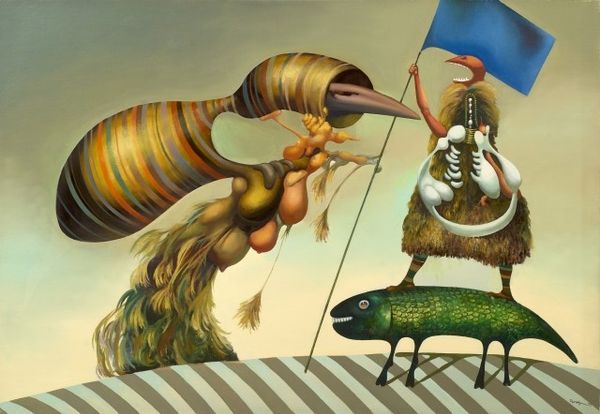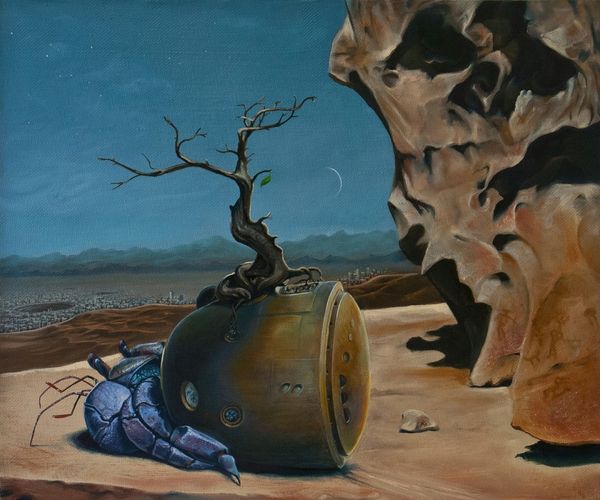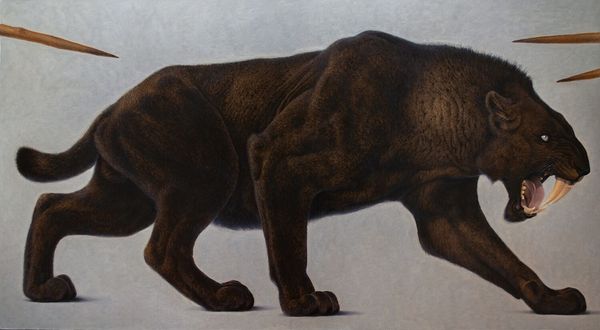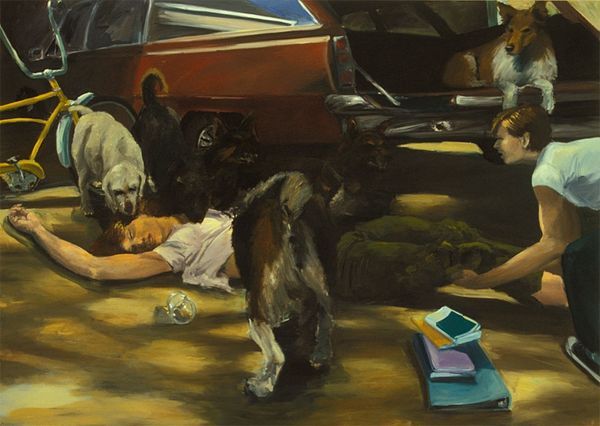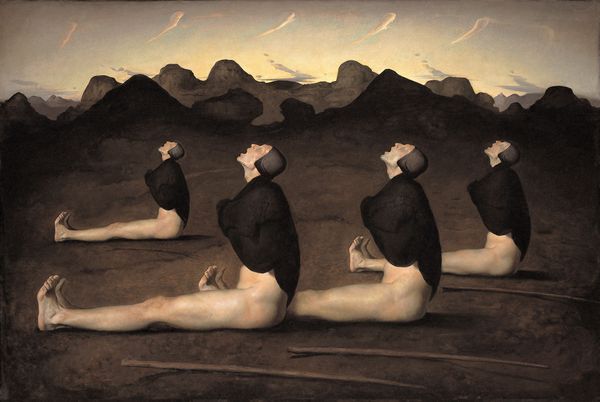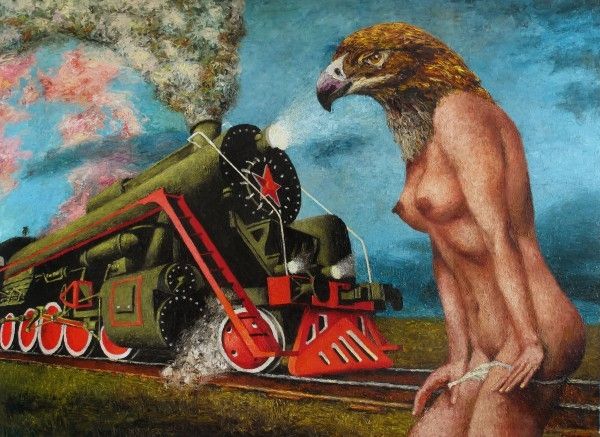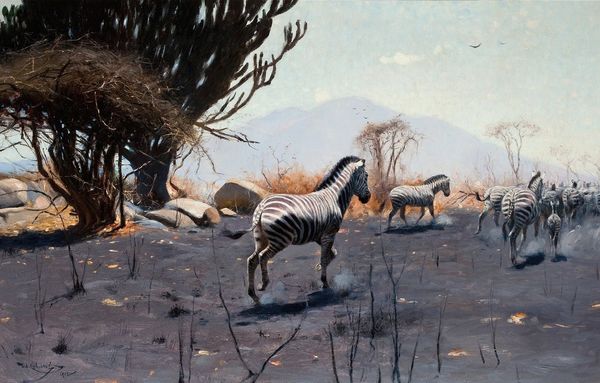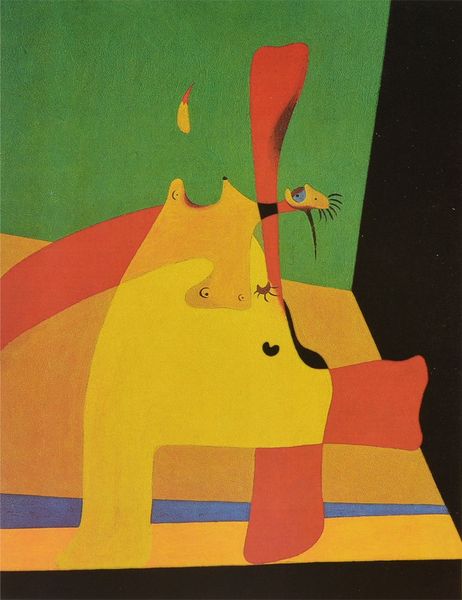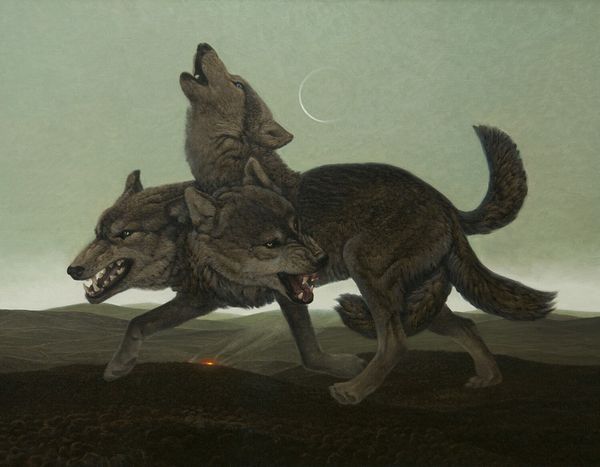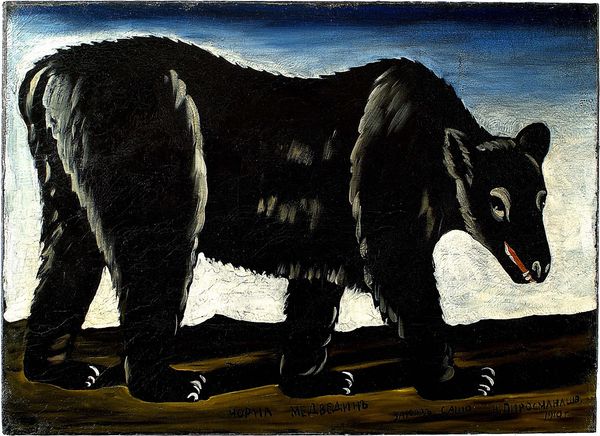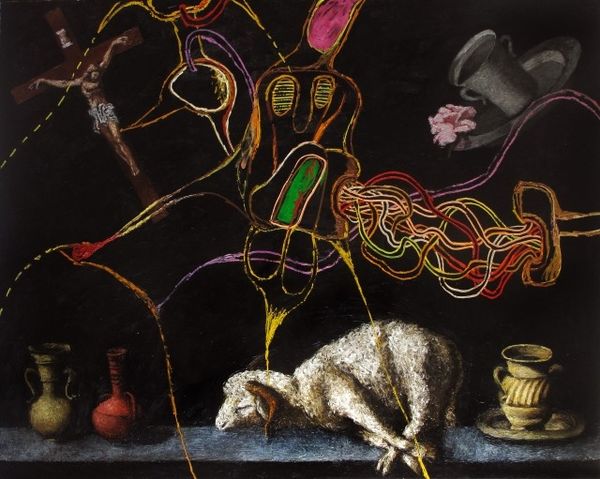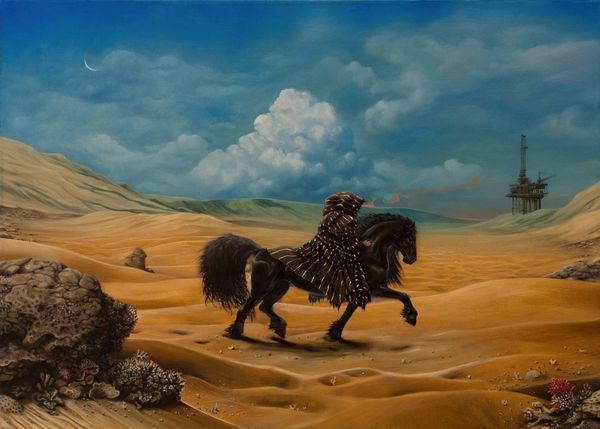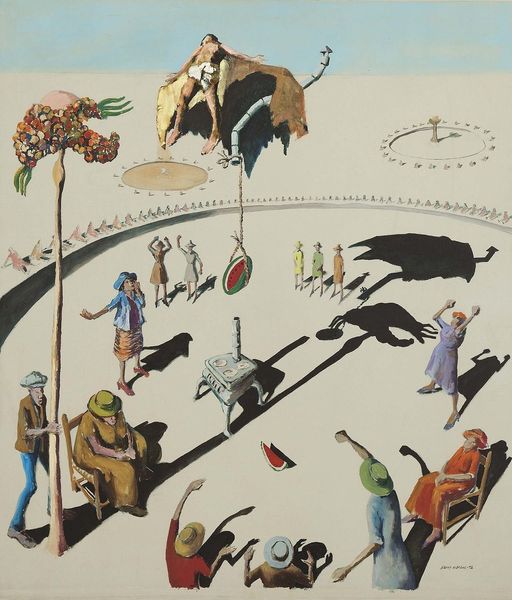
The Sleeping Gypsy 1897
0:00
0:00
henrirousseau
Private Collection, Museum of Modern Art (MoMA), New York City, NY, US
Dimensions: 200.7 x 129.5 cm
Copyright: Public domain
In this fantastical oil painting, the self-taught French Post-Impressionist Henri Rousseau (1844-1910) depicts a woman sleeping soundly in a desert landscape. She is approached by a lion with a wild mane, while a full moon beams down from the upper right portion of the canvas. 🌕 Painted in 1897, ‘The Sleeping Gypsy’ is now in the collection of the Museum of Modern Art in New York. It’s displayed in Room 501, directly next to Vincent Van Gogh’s iconic ‘The Starry Night’ (1889). How might this change interpretations of the work? Why might the curator have chosen to pair these paintings? 🖼️ There are several immediate similarities between the two famous paintings. Both emerged from France in the late nineteenth-century. They each incorporate unconventional landscapes with star-studded skies of rich blue. ✨ The woman in ‘The Sleeping Gypsy’ wears a long stripy dress in bold colours. She clutches a staff or stick, suggesting that she has been walking through the desertscape for an extended period of time. In the foreground lies a mandolin, alongside a terracotta vase. 🏺 The simple, satisfying shapes communicate a sense of peace and tranquillity. Take a look at the smooth sand and dreamlike hills of the background! The woman is depicted in a deep sleep – despite the presence of the lion, there is no impression of danger. This symbolises harmony with the natural world. 🕊️ As a naïve artist, Henri Rousseau was untrained and did not conform to conventions of perspective or realism. Yet his work is far from simple. What do you like most about this painting? 👇💭 Editor: Lucy Jude Grantham
Comments
artera almost 2 years ago
⋮
Henri Rousseau (1844-1910) was entirely self-taught and did not embark upon an artistic career until relatively late in life. He worked in a number of minor administrative jobs before retiring on a small pension to paint full time, and he exhibited regularly at the Salon des Indépendants. Throughout his life he had a great love of music, and he supplemented his income by teaching music, and later by taking in art students. His work was highly criticized during his life, and mostly regarded as uneducated and immature. Rousseau worked slowly and carefully using many layers of paint and exotic, jewellike colors, and had a fairly small output. The Sleeping Gypsy is one of the most famous images of the modern era, and is stunning in the simplicity of its composition combined with the subtlety of its execution. The beautiful and monumental figure of the gypsy seps quietly while the lion watches over her, the whole scene bathed in the eerie light of a full moon. The image is both intensely surreal and dreamlike, but also strangely real and the image works on both levels of interpretation. Rousseau offered the painting to the town of Laval, his hometown, for two or three hundred francs, but the town turned it down on account of the painting being "too childish." Yet Rousseau's simplified forms and imaginative use of space and symbol was admired by many arts, especially those who made the transition into Modernist painting, among whom were Picasso. Delaunay, Kandinsky, Brancusi, and Matisse.
Join the conversation
Join millions of artists and users on Artera today and experience the ultimate creative platform.
